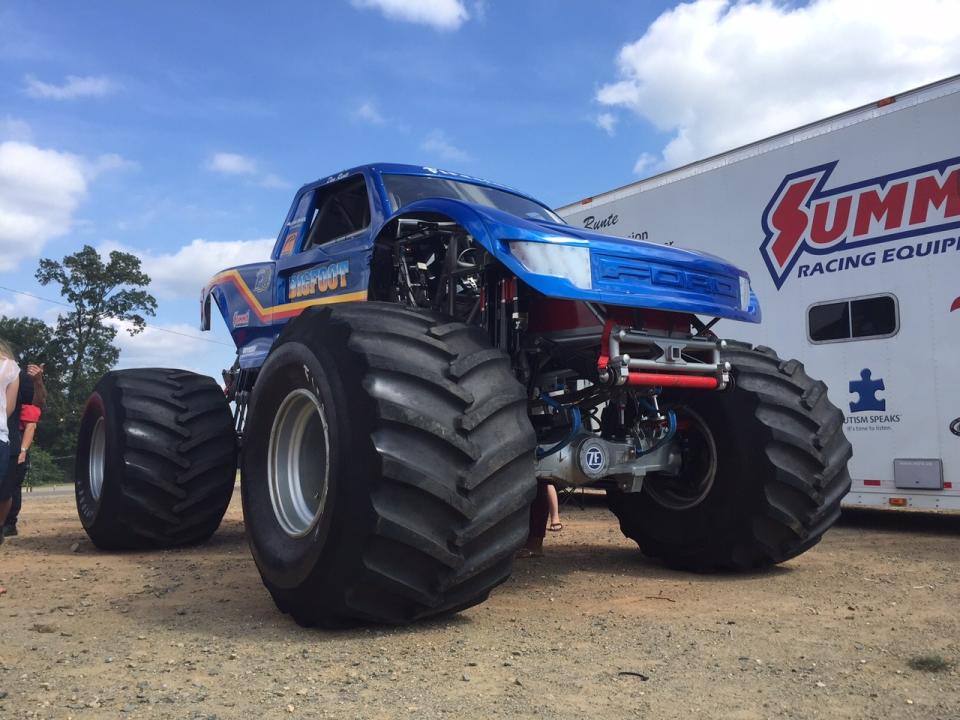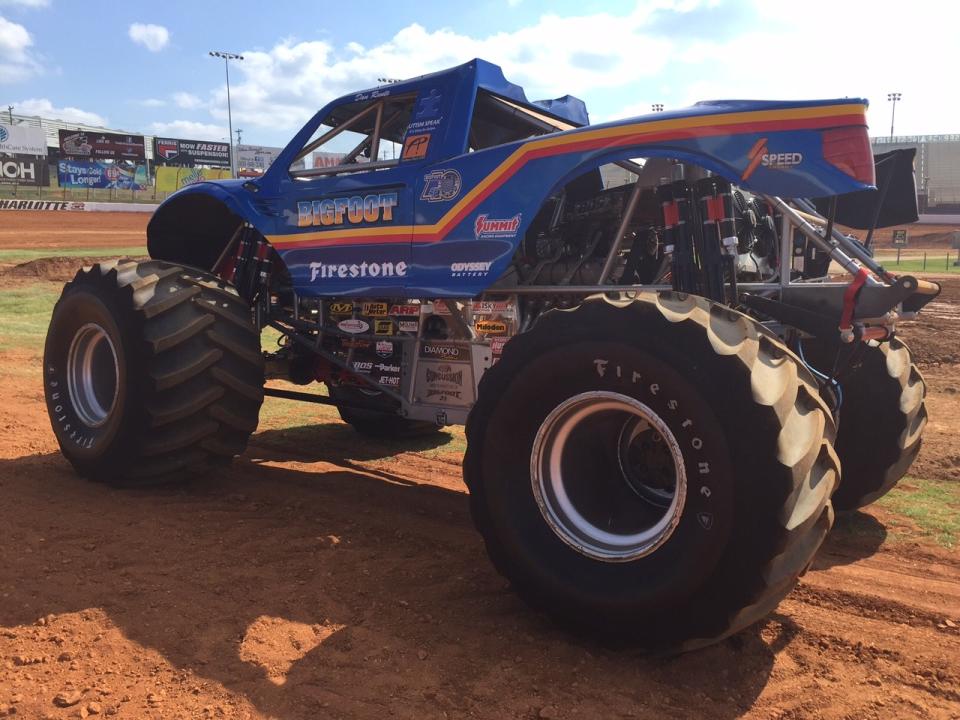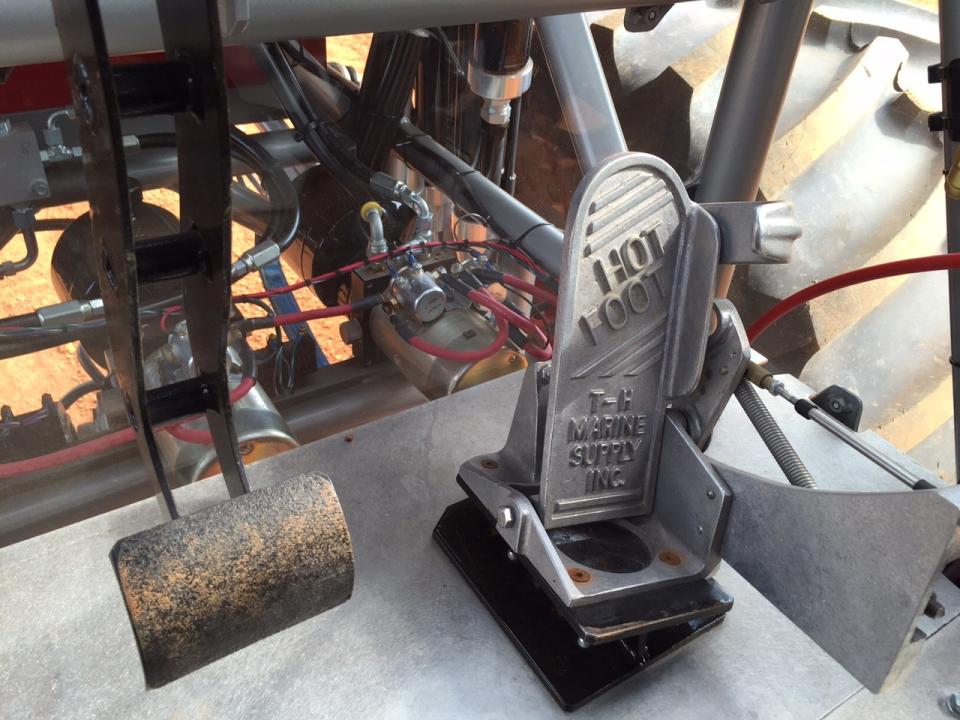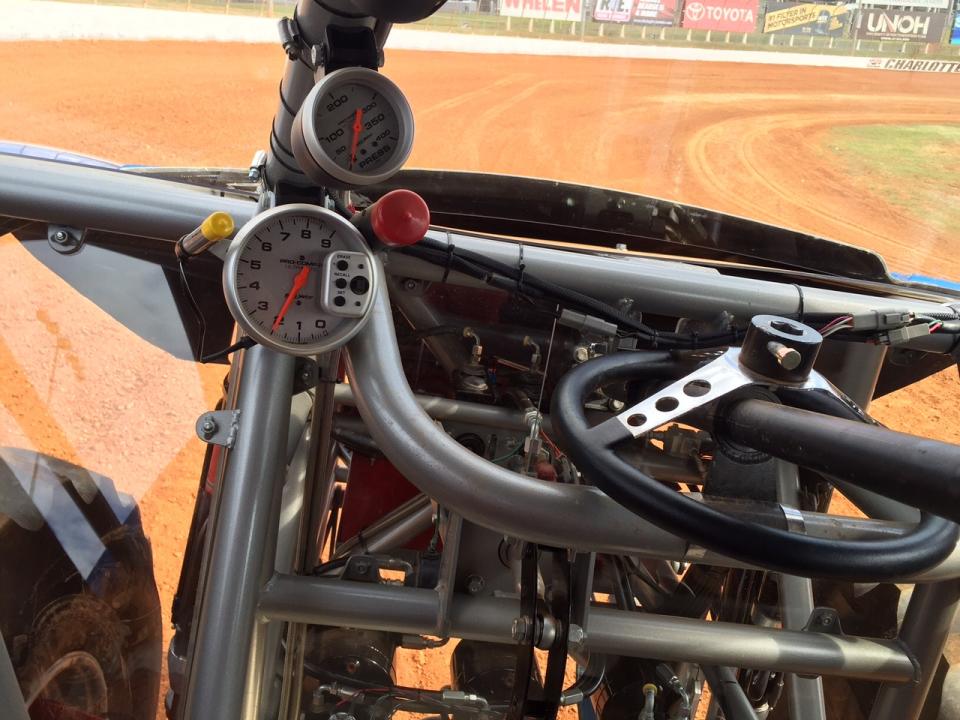Driving Bigfoot: At 40 Years Young, Still The Monster Truck King
In the right hands, a monster truck can look graceful. You see a truck launch off some improbable obstacle—say, a ramp built atop a school bus—soar 60 feet in the air and land with nary a thud, its phalanx of remote-reservoir shocks compressing through what appears to be a yard of travel. Monster trucks these days almost look forgiving, a far cry from the creaky leaf-sprung contraptions I worshiped as a kid. Well, appearances can be deceiving, as you’ll find out firsthand a couple seconds after you launch six tons of Bigfoot into the air. The HANS device strapped to your helmet is about to get real important.

Bigfoot? Yes, that Bigfoot. The one you might’ve delighted in as a kid, the preeminent monster truck of the 1980s. This is Bigfoot’s 40th anniversary, and the latest machine—wearing a Raptor-esque body and retro stripes—is the 21st iteration of the truck. Despite four decades of advances in monster truck design, the new truck still has a strong connection to the agricultural industry, wearing tires designed for a fertilizer spreader and ZF axles borrowed from front-wheel-drive European tractors. Unsprung weight was maybe not the prime consideration in the build. Deploying 1,730 extremely violent horsepower requires some robust components.

Team Bigfoot, to its everlasting credit, decided to let me drive this towering, expensive, Hellcat-quick mountain of truck. We’re at the dirt track at Charlotte Motor Speedway, where the infield will soon be the setting for some car-crushing mayhem. (The best monster truck shows are the outdoor ones, where the drivers have room to unchain the beasts.) I can’t crush any cars—they need them for tonight—but a jump or two? Sure. Bigfoot’s driver, Dan Runte, gives me a tutorial to explain the procedure.

The cab of the truck is filled with a daunting array of knobs, toggles and levers, but the fundamentals are familiar. There’s a gas pedal, a brake pedal and a two-speed B&M ratchet shifter. And of course there’s a steering wheel, but that’s only responsible for half of your steering. The other 50 percent is controlled from a toggle switch to your right, which activates the rear-wheel steering. After completing a turn, the driver can push a button to manually re-center the rear axle. Or you can set it up to automatically center as soon as you let off the button. I request that mode. Steering different axles with each hand will be difficult enough, and there are other concerns.


 Yahoo Autos
Yahoo Autos 